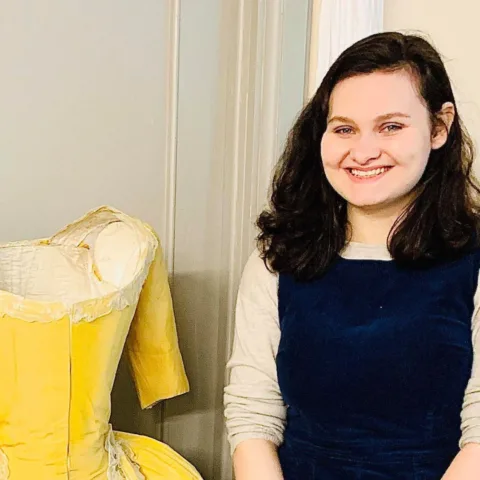The Bowes Museum Blog

Cleaning the Baroque to the Neo-Classical
The time has come again for the carpets and upholstered furniture in the Baroque, Chinoiserie and Rococo room (Room 12), and the Neo-Classical room (Room 11) to be surface cleaned. Having historic objects on open display allows them to be enjoyed by the public, but also means that over time dust settles on the surfaces. The front of house staff regularly clean the wooden furniture, but the textiles require more specialist attention.
To state the obvious, having dusty objects is visually distracting, the fine weaving or embroidery is obscured, and the bright colours are dulled. Dust is also damaging for the textiles, becoming ingrained in their surfaces, and increasingly difficult to remove. Dirty surfaces can attract pests, and cleaning is a good opportunity to study each object in detail, looking for signs of damage and deterioration, or insect activity. But over-ambitious cleaning can remove more than just dust, fragile textile surfaces can become powdery, so the balance must be struck between removing the dust, and not damaging the textiles beneath.
This detail of tapestry chair cover from the Van Den Bergh suite, shows a wolf disguised as a shepherd. The layer of dust that has settled on its surface disguises the vivid colours, the pale cream colour of the sky, and bright red shepherds coat.
We surface clean with a specialist museum vacuum, with adjustable suction. The end of the nozzle is covered with fine muslin, allowing us to check how much dust is being removed, and if any fibres are being lost. Cleaning is slow and systematic, working thoroughly over the textile surfaces, and taking great care around the gilded wood, which is very fragile.
The results are good, and the appearance of the furniture has been much improved. We’ll monitor the dust levels in this room, and aim to clean the furniture again in another 6 months time. We’ve also highlighted a few objects in need of conservation, so I’ve added these to my ever-expanding list of things to do.
By Katy Smith, Textile Conservator











